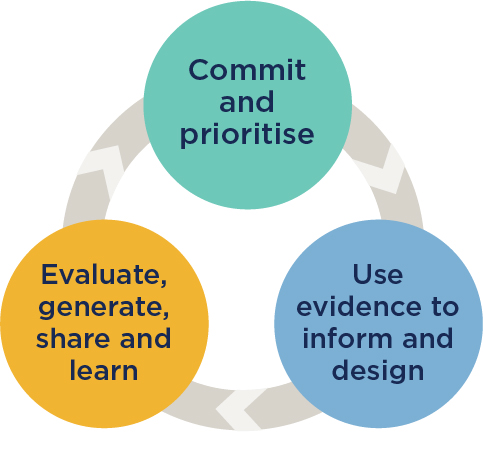Our strategy for evidence and evaluation in access and participation
Our vision is that evidence and evaluation is used effectively by the Office for Students (OfS) and higher education providers to drive improvements in equality of opportunity.
What needs to change
We have outlined three core outcomes for the OfS and higher education providers:

Detailed provider outcomes
| Outcomes | Indicators |
|---|---|
| Providers commit to and prioritise a culture of evidence to support their work to eliminate inequality in higher education. |
|
| Providers use evidence to understand local and national inequalities, and to design impactful programmes. |
|
| Providers evaluate to understand impact, share and learn from evidence |
|
Detailed OfS outcomes
| Outcomes | Indicators |
|---|---|
| The OfS commits to and prioritises a culture of evidence to support its work to eliminate inequality in higher education. |
|
| The OfS uses evidence to understand and respond to national inequalities and to design impactful programmes and funding. |
|
| The OfS evaluates to understand impact, learn and share high quality evidence. |
|
How we will realise our vision
Our strategy places the effective use of evidence and evaluation as central to the transformational change needed to eliminate inequality in higher education. We will:

- Set high expectations and apply pressure where performance isn't strong enough
- Persuade and advocate for using evidence and evaluation
- Enable providers to make more effective use of evidence and evaluation
- Incentivise and support partnerships and innovative practice
- Learn from expertise and lived experiences to understand and find solutions for the challenges we face
- Embed change within the OfS, in line with our organisational values, to deliver this strategy.
Published 29 March 2023
Describe your experience of using this website
